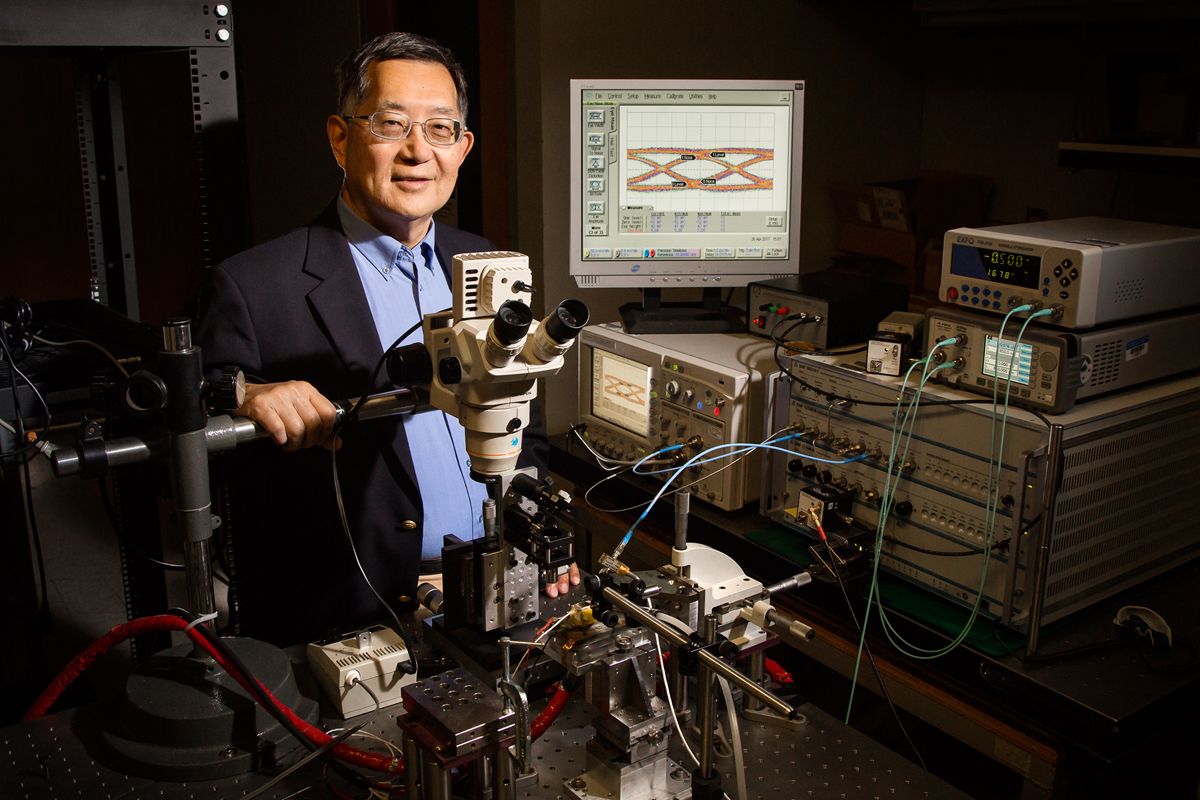
University of Illinois engineer Milton Feng and his team have introduced an upgrade to transistor lasers that could boost computer processor speeds. Image: L. Brian Stauffer
Engineers are unveiling an upgrade to the transistor laser that could be used to boost computer processor speeds — the formation of two stable energy states and the ability to switch between them quickly.
Modern computers are limited by a delay formed as electrons travel through the tiny wires and switches on a computer chip. To overcome this electronic backlog, engineers would like to develop a computer that transmits information using light, in addition to electricity, because light travels faster than electricity.
Having two stable energy states, or bistability, within a transistor allows the device to form an optical-electric switch. That switch will work as the primary building block for development of optical logic — the language needed for future optical computer processors to communicate, says Milton Feng, the Nick Holonyak Jr. Emeritus Chair in electrical and computer engineering and the team lead in a recent study.
“Building a transistor with electrical and optical bistability into a computer chip will significantly increase processing speeds,” Feng says, “because the devices can communicate without the interference that occurs when limited to electron-only transistors.”
In the latest study, the researchers describe how optical and electrical bistable outputs are constructed from a single transistor. The addition of an optical element creates a feedback loop using a process called electron tunneling that controls the transmission of light. The team published its results in the Journal of Applied Physics.
Feng said the obvious solution to solving the bottleneck formed by big data transfer — eliminating the electronic data transmission of the transistor and use all optics — is unlikely to happen.
“You cannot remove electronics entirely because you need to plug into a current and convert that into light,” Feng says. “That’s the problem with the all-optical computer concept some people talk about. It just is not possible because there is no such thing as an all-optical system.”
Feng and Holonyak, the Bardeen Emeritus Chair in electrical and computer engineering and physics, in 2004 discovered that light — previously considered to be a byproduct of transistor electronics — could be harnessed as an optical signal. This paved the way for the development of the transistor laser, which uses light and electrons to transmit a signal.
The new transistor could enable new devices and applications that have not been possible with traditional transistor technology.
“This is a single device that provides bistability for both electrical and optical functions with one switch,” Feng says. “It is totally new, and we are working hard to find more new applications for the device.”
Feng and his team have demonstrated electro-optical bistability at -50 degrees Celsius. The next step will be to prove that the device can work at room temperature. Feng says that they recently achieved this milestone, and the details will be published in an upcoming report.
“Any electronic device is virtually useless if it can’t operate at room temperature,” Feng says. “Nobody wants to carry a device in a refrigerator to keep it from getting too hot!”
The U. of I. department of electrical and computer engineering supported this research.
Source: University of Illinois




